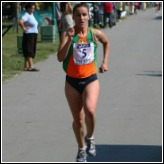Speed Training Tips for Maximum Speed

The internet is full of
information about speed training tips. The reason for this is that for many
sports, speed is a key indicator of performance and so getting current and
accurate information about this area of conditioning is important. I am not
sure how many of these authors are currently working with athletes where speed
is their life’s blood – but I know I am!
The advice given here is some of the most current you will find anywhere…
In recent years there have been a number of studies which have looked at how 100m races were won and lost. Of the many ideas coming out of these researches one of them is that the maximum speed phase of a 100m sprint is the most important part of the race. The ability to attain a high maximum speed is just as important to athletes such as those in American Football, Baseball and Soccer, as it is to track and field athletes. Below you will find some speed training tips to help you improve this important area of your fitness.
Speed Training Tips #1
Modern speed/sprint specialists will often refer to what is known as “front-side” and “back-side” mechanics. This refers to the type and range of movement of the lower extremities as the center of mass (CM) passes over the foot of the sprinting athlete. Maximum speed is influenced more by front-side mechanics than by back-side mechanics.
And here is why…
- Studies have also shown that in the maximum speed phase of sprinting, more power is generated in the first half (front-side) of the force generation cycle than in the second half (back-side).
- It is also known that faster sprinters tend to end their ground contact earlier than their peers and have shorter ground contact times.
- An over emphasis on back-side mechanics on the other hand, tend to delay the heel recovery phase of the stride pattern thus slowing down the stride frequency of the athlete – not good if you are a sprinter.
Speed Training Tips #2
Maximum speed is trained for by employing maximum speed runs utilizing distances of 10m – 30m from a flying start. There are a number of methods you can use to attain this training effect:
- You can do runs with the wind - the wind in this sense is helping you to move faster than you would normally.
- You can sprint while being towed or pulled during the run. The pulling could be done by another person, although nowadays you can purchase mechanical devices to do the work of pulling.
- You can sprint down a hill or have special ramps made to the correct angle for down hill sprinting. When employing down hill sprinting for maximum speed training, you should ensure the gradient is at an angle which will allow the athlete to run faster without the worry of falling. Too steep a gradient and the body will automatically want to put the break on which in turn means that the athlete is running slower not faster!
Speed Training Tips #3
During the maximum speed phase of running the athlete is literally running over the ground. At this stage in their running, they have minimal contact with the ground in fact the ground contact time for elite sprinters during this phase of running is only 90 milli-seconds. Due to the limited time available to generate force, the body needs to act reflexively.
Short response or low impact plyometrics exercises are used to develop the reactive ability of the lower extremities to maintain speed in the maximum speed phase of sprinting. These types of activities train the tendons of the foot, ankles and knees to store the elastic energy. It is this which provides the propulsive force for high speed running.
So there you have it, some of the best speed training tips for high speed running you will get anywhere, use them well.
Sign Up For The Latest Track And Field News And Improve Your Athletic Performance!
From
"Speed Training Tips for Maximum Speed" Back To "Faster, Stronger,
Better – Your Shortcut To Improved Athletic Performance"
Learn more about speed training







